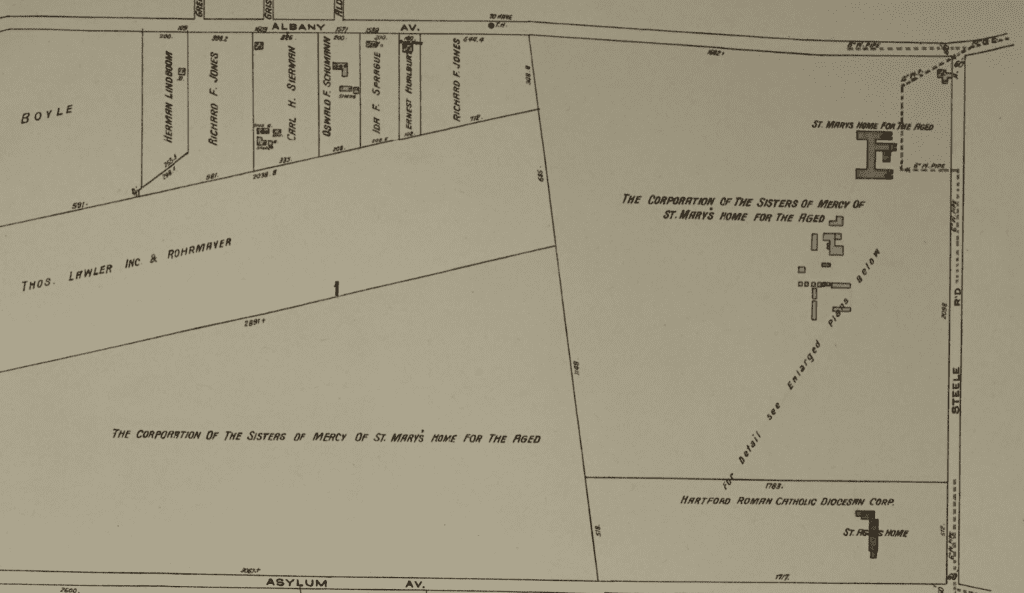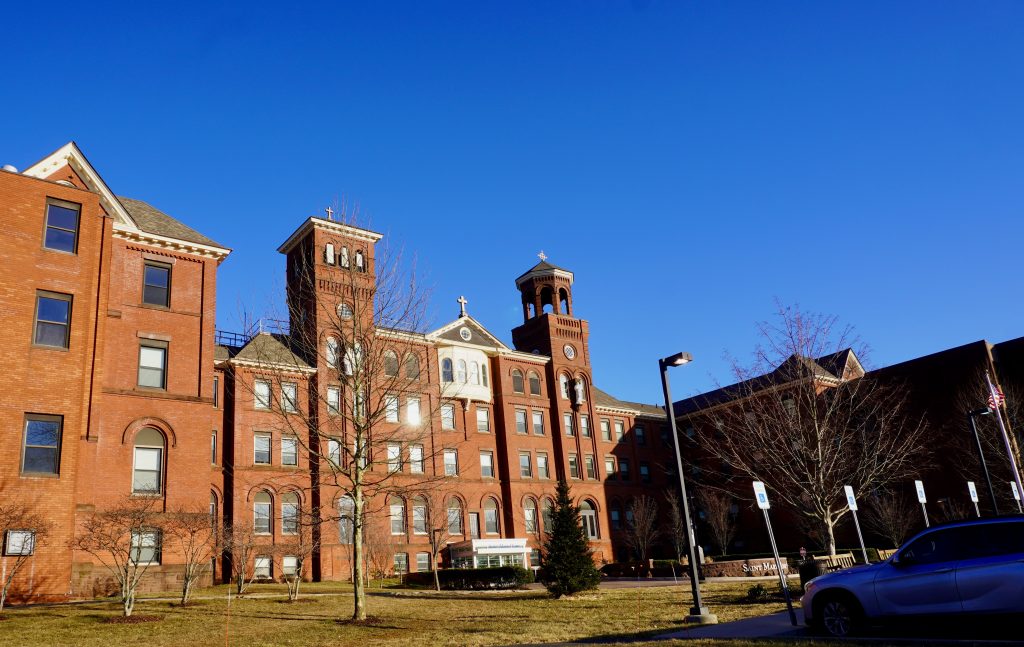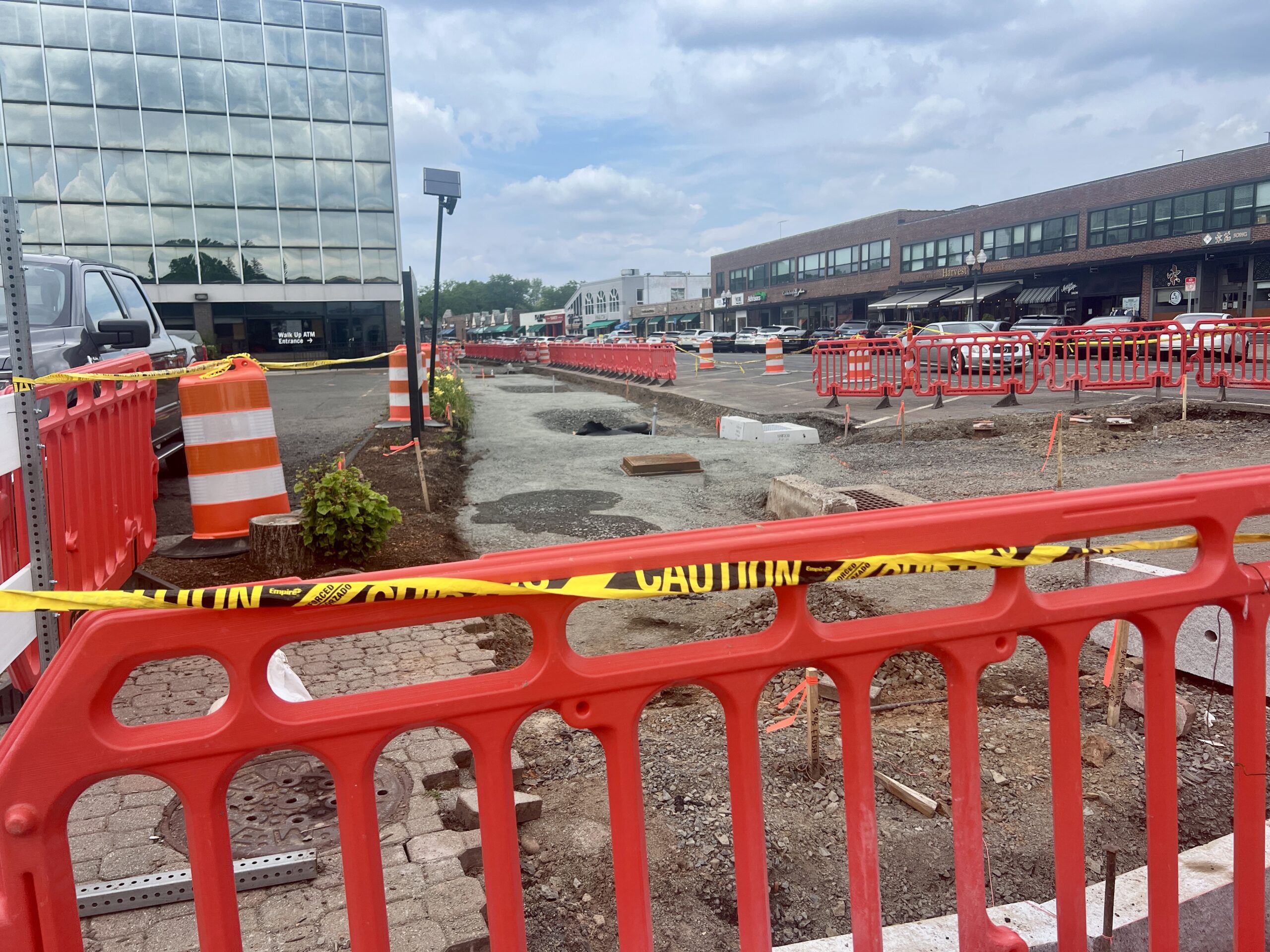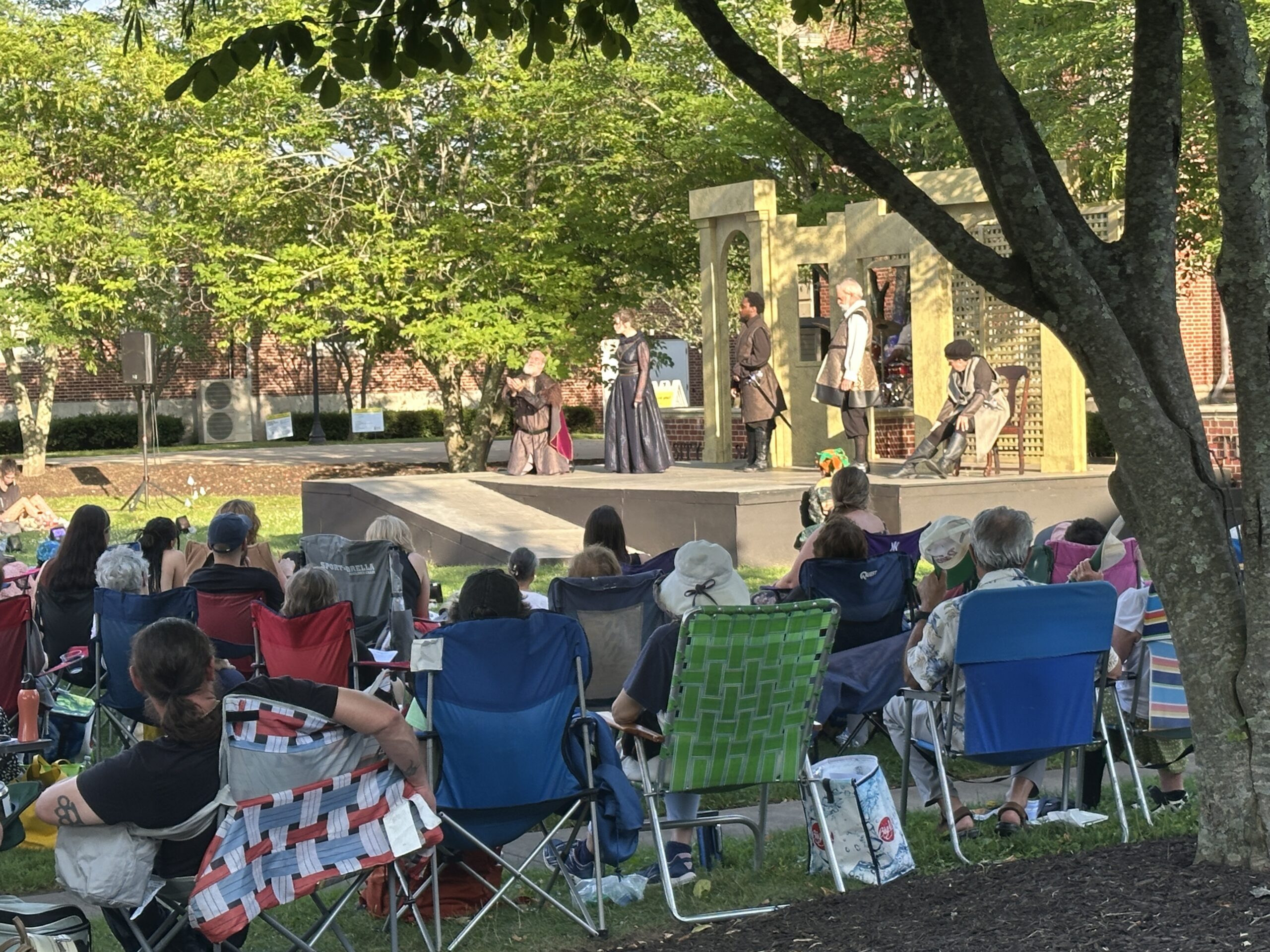From the West Hartford Archives: St. Mary’s Home for the Aged, Now Saint Mary Home

Audio By Carbonatix

St. Mary's Home for the Aged. Photo courtesy of Noah Webster House & West Hartford Historical Society
Historian Jeff Murray takes a look into West Hartford’s past to uncover some surprising information, stir up some memories, or reflect on how much life has changed – or hasn’t changed at all. Enjoy this week’s ‘From West Hartford’s Archives’ …
By Jeff Murray
St. Mary’s Home for the Aged was built in 1896 at the southwest corner of Albany Avenue and Steele Road as an assisted living home for the elderly in response to the expansion of the work done by the Sisters of Mercy. This view looks east towards the west wing of the building.
The Sisters of Mercy, a Roman Catholic religious order founded in Ireland that emphasized caring for the sick and needy, opened a school in Hartford in the 1850s and slowly increased their reach in the immediate area over the following decades, establishing schools, hospitals, and other charitable institutions under the guidance of the Bishop of Hartford.
Lawrence McMahon, the fifth bishop of Hartford, oversaw the creation of more than 48 new parishes and the dedication of 70 new churches from his consecration in 1879 until his death in 1893.
The work of the Sisters of Mercy contributed greatly to this expansion. In 1878, the Sisters bought the Terry farm at the southwest corner of Albany Avenue and Steele Road for the purpose of establishing a home for the elderly, which opened in the fall of 1880. They also ran the Preparatory School for Boys on South Quaker Lane (which had an attendance of 35 students by the end of the 1880s). Much of this increased activity can be explained by the state of the world in this era.
Hartford saw its population more than double from 37,743 in 1870 to nearly 80,000 in 1900. Rapid growth in cities like Hartford created a pressing need for social services, including healthcare and support for those who needed it.
With its establishment just over Prospect Hill, St. Mary’s Home helped address the spillover of these issues that were targets of the social reform movement of the era. The 1870s and 1880s also saw a significant influx of immigrants, particularly Catholics from Ireland, Italy, and other European countries, helping expand the Catholic Church in terms of geographical reach and by development.
By the early 1890s, the original home was deemed unsuitable for higher numbers of people who needed it and plans were made for the current building to replace the farmhouse in the spring of 1894. The previous factors had strengthened the Sisters of Mercy, but the plans in 1894 coincided with the beginning of the recovery from a major economic depression in the United States. Arguably comparable to the Great Depression of the 1930s, this period saw business failures, bank closures, and high unemployment; heavy labor unrest and strikes; the populist movement; and an overall shifting economic landscape. The economic recovery from 1894-1896 would have enabled the Sisters of Mercy to secure the support and funding for charitable expansion.
Built under architect John J. Dwyer and contractors Barrett Brothers, St. Mary’s Home was built four stories high with one wing and a chapel, including an administration building that connected two large dorms. The farm on the south side of the property that extended back to Asylum Avenue was used to supply garden produce for the institution.
It formally opened in April 1896 and was the talk of the town alongside the new high school that had been built simultaneously in the Center.
In the fall of 1897, Sister Mary Fabian, a teacher at the Sacred Heart convent in Bridgeport, was elected reverend mother superior of all the Sisters of Mercy in Connecticut. At the high point of expansion, she presided over 350 Sisters, multiple convents, St. Mary’s Home, St. Augustine’s School on South Quaker Lane, several state-wide convent schools, and an orphan asylum in New Haven.
Each year, the residents had an average age of 70 and according to town statistics, contributed a quarter of all the deaths in West Hartford. In alignment with the demographic changes of the time, the residents were predominantly Irish and from Hartford. In 1899, after a few years in operation, the Sisters bought an additional 86 acres of land along Asylum Avenue and lobbied for the extension of the delivery of mail directly to the home.
An addition to the south was built in 1904 to care for more than 250 people, more than double the previous capacity. There was a new kitchen, wing with men’s dining rooms above it, and covered bridges connecting the men’s and women’s wings with the dining rooms. The addition also prompted talk of a trolley line extension directly to the property, which was carried out in 1908 through Steele Road to Albany Avenue.
In 1910, they built their own ice pond and had two special constables appointed to cut down on criminal disturbances that came with the rapid growth of the institution (notably theft and assault on employees but also reckless driving along Albany Avenue right around the time cars became popular).
In 1922, another addition was built and part of the home was set apart as an infirmary – a product of the post-World War I and Spanish Flu pandemic recovery, advancements in medicine and public healthcare, and the continued support of the Catholic Church.

Map from 1923 showing the Sisters of Mercy property
Outside of the scope of this article, the Sisters of Mercy also founded the St. Agnes Home for pregnant teens and unwed mothers south of St. Mary’s Home off Asylum Avenue in 1914, the University of Saint Joseph in 1932 to the west, and later oversaw the construction of a large convent hospital (Mercyknoll) for aged nuns on the land between the two in 1960. It included a chapel and facilities for nursing, medical care, and physical and occupational therapy. Another addition in 1965 tells a story of continuous growth in the Hartford area.
By 1978, St. Mary’s employed 250 nurses, aides, orderlies, dietary staff, and housekeepers, with over half of them unionized under the National Union of Hospital and Health Care Employees (AFL-CIO) 1199. In 1981, 400 Sisters of the Order met at Mercyknoll to mark 150 years since its founding in Dublin. Changes in religious and social life meant that large numbers of women were leaving and newer candidates were harder to find, with a steady decline since the 1960s.
Now known as Saint Mary Home, these changes have squeezed wages and hours of employees without the same philanthropic and institutional support a hundred years ago. The pandemic brought even more trouble. Nevertheless, in the spirit of the Order that established the home on this farm 144 years ago, excellent care continues to be provided.

Saint Mary Home, West Hartford. Photo credit: Ronni Newton (we-ha.com file photo)
Jeff Murray was born and raised in West Hartford and has been involved with the Noah Webster House & West Hartford Historical Society since 2011 when he was a high school student and won the Meyer Prize for his essay on local history. Jeff routinely volunteers as local history researcher uncovering information for numerous museum programs such as the West Hartford House Tour and West Hartford Hauntings. Jeff works as a data analyst at Pratt & Whitney.
Like what you see here? Click here to subscribe to We-Ha’s newsletter so you’ll always be in the know about what’s happening in West Hartford! Click the blue button below to become a supporter of We-Ha.com and our efforts to continue producing quality journalism.



